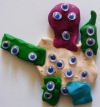~ Kristen DeCamp
Sweat the small stuff. Notice the details.
Check that all light bulbs are working. Dust for cobwebs. Clean behind the appliances. And if you do nothing else, make sure that there is plenty of toilet paper! You may be in charge of a multi-million dollar estate with monumental responsibilities, but nobody cares how busy you are when your boss is left with an empty roll of toilet paper. When he has to choose between using his very expensive organic towel or his hand to finish the job, someone is getting fired!
Prepare to have rich hobbies.
Your employers may enjoy exotic travel, expensive wine and whiskey, art, high-end vehicles, or may have an agrarian bent. You need to make these passions your own in order to serve your employers tastes. Find online enthusiasts, forums, and advice from experts. Passionate people love to share their successes and failures. Their expertise will make you look like a rock star!!
Read what your employer’s read. Watch what they watch.
Read what your employer’s read. Watch what they watch.
When you immerse yourself in someone’s home, you need to see the world through their eyes in order to best serve them. This principle applies to everyone you know. This insight will make you far more intuitive to your employer’s tastes, likes and dislikes.
Never go to your employer with a problem without having at least one or two solutions.
Nobody likes drama or chaos. Your job is to solve problems. Save your employer time by doing the research and developing a plan of action. They did not hire you to complain, they hired you to save them time and bring a sense of calm to their home.
There is going to come a time where you could see your employer naked.
This is not something in the formal job description, but how you handle the three seconds afterwards can greatly impact your Christmas Bonus! The only acceptable response to this embarrassing situation is to say, “Hey, you’ve been working out haven’t you?”

Kristen DeCamp is a leading expert in the domestic staffing industry. Her knowledge base and skill set are unmatched. Kristen began her career as a nanny many years ago and gracefully morphed into a full-time house manager. Currently, she serves as Chief of Staff for her principal, overseeing multiple estates and their staff.




























